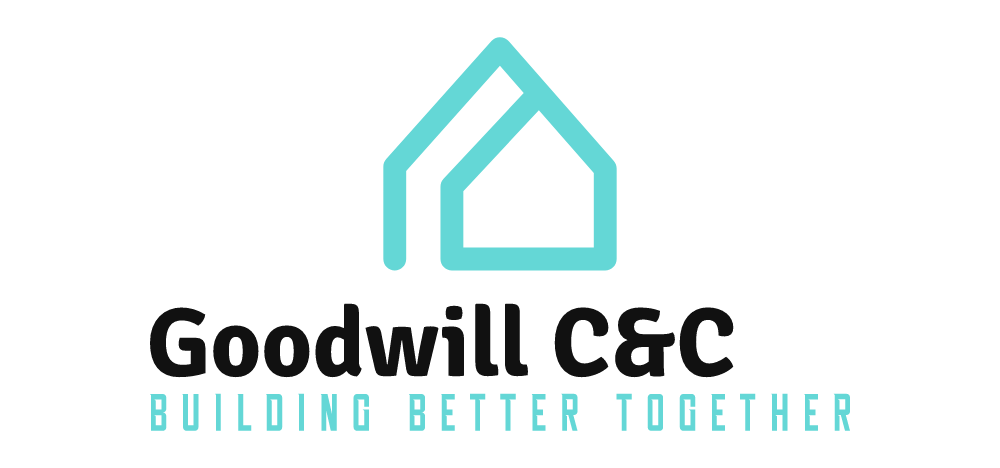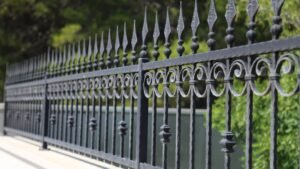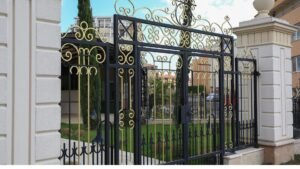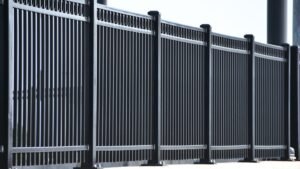Welcome to our comprehensive guide on understanding labor costs for fence installation! Whether you’re looking to enhance your home’s privacy, boost its curb appeal, or create a secure space for your family, knowing how much you’ll need to invest in labor is key to budgeting for your new fence. In this post, we’ll break down everything you need to know about what influences labor costs, from the type of materials you choose to the complexities of your landscape. By the end, you’ll have a clear understanding of what to expect, empowering you to make informed decisions when planning your fence installation project. Let’s dive in!
On average, labor costs for fence installation range from $30 to $80 per hour or $7 to $12 per linear foot, depending on the type of fence material, the complexity of the job, and your location. Factors such as terrain, fence height, and additional features like gates can also influence the final labor cost.
Table of Contents
Why Labor Costs Vary
Labor costs for fence installation can vary significantly based on several factors. When considering a fence project, it’s essential to understand the elements that affect the overall cost of labor to budget accurately. Below are some of the key factors that can cause labor costs to fluctuate.
Type of Fence Materials
The type of material you choose for your fence plays a crucial role in labor costs, as each material has different installation requirements. For example, wood fences are often more labor-intensive to install because they require cutting, sanding, and potentially staining or painting. Additionally, wood posts may need to be dug deeper into the ground for stability, increasing labor time.
On the other hand, vinyl fencing, while more expensive upfront, generally requires less time to install. Vinyl panels are often pre-fabricated and easier to assemble, which reduces the overall labor costs. Chain link fences also tend to be quicker to install compared to wood or wrought iron, but can still require precise measurements and tensioning to ensure durability.
Wrought iron or aluminum fences, though durable and long-lasting, can be costly in terms of labor due to their weight and the need for custom fitting, especially on uneven terrain. Each type of material not only affects the time it takes for the installation team to complete the job but also the skill level required, which further impacts labor costs.
Fence Height and Length
Another significant factor influencing labor costs is the size of the fence. Taller fences require more effort and time to install, as they often need additional support and stability. For instance, a 6-foot privacy fence is more labor-intensive than a shorter 3-foot picket fence, as it may require deeper post holes and more material handling. Additionally, longer fences naturally require more materials, digging, and alignment, which increases the overall labor time.
The length of the fence is also a direct multiplier for labor costs. A fence that spans a larger area will require more digging, post setting, and material installation, all of which extend the project timeline. Therefore, the bigger the fence, the higher the labor costs due to the increased time and effort required.
Location and Terrain
The installation site’s location and terrain significantly influence labor costs as well. A flat, clear yard with soft soil is much easier and quicker for workers to handle compared to an uneven or sloped landscape. If your property has rocky terrain, dense tree roots, or other landscaping obstacles, it can add complexity to the installation process. These conditions may require additional tools or equipment and slow down progress, leading to higher labor costs.
For example, setting posts in rocky soil is far more labor-intensive than in soft soil, and if tree roots are present, they may need to be removed or worked around, which adds time to the project. Similarly, a fence on a slope requires custom measurements and adjustments to ensure that the fence is level and secure, further increasing labor expenses.
Regional Labor Costs
Geographic location plays a significant role in labor costs due to variations in local labor rates and the cost of living. Urban areas, where the cost of living is generally higher, tend to have higher labor rates compared to rural areas. For example, installing a fence in a major metropolitan area will likely be more expensive in terms of labor than a rural location where labor rates are typically lower.
Additionally, regions with higher demand for construction and skilled labor may also see an increase in labor costs. For example, in areas with a booming housing market, skilled laborers are in high demand, which can drive up rates. This is something to consider when budgeting for your fencing project, as labor rates can differ significantly depending on where you live.
In conclusion, labor costs for fence installation are influenced by the type of materials used, the size of the fence, the installation site’s conditions, and regional labor rates. Understanding these factors can help you better estimate the labor costs for your project and make more informed decisions about your fencing options.

Typical Labor Costs For Common Fence Types
When planning a fence installation, it’s crucial to understand the labor costs involved for different fence materials. Labor is often one of the largest components of the overall expense, and the complexity of installation can significantly impact the final price. Below, we’ll break down the average labor costs for some of the most common fence types, along with the factors that can influence these prices.
Wood Fence
Wood fences are a popular choice due to their versatility and natural appearance. However, the labor costs for installing a wood fence can vary based on several factors. Typically, the average labor cost per linear foot ranges between $15 and $25, but this can fluctuate based on the specific project needs.
Factors that influence wood fence labor costs include:
- Posthole digging: Installing wooden posts requires significant manual labor, especially if the ground is hard or rocky. More challenging terrain can increase labor costs.
- Staining or painting: Wood fences often require additional treatment after installation, like staining or painting, which adds both time and labor to the project.
- Custom designs: If your wood fence includes intricate patterns or custom layouts, the labor will likely be more expensive due to the added complexity.
Vinyl Fence
Vinyl fences have become increasingly popular due to their durability and low maintenance needs. Installing a vinyl fence usually involves assembling pre-fabricated panels, which is generally easier and faster than building a wood fence from scratch. The labor costs for vinyl fence installation typically range between $7 and $15 per linear foot.
Key factors affecting vinyl fence labor costs include:
- Pre-fabricated panels vs. custom fencing: Pre-fabricated vinyl panels are designed for easier assembly, which reduces labor time. However, if you opt for a custom vinyl fence with specific measurements or unique designs, expect labor costs to rise.
- Easier installation: Because vinyl is lightweight and the panels often snap together, labor costs are lower compared to other fence materials. However, keep in mind that while labor might be cheaper, vinyl fencing materials can be more expensive upfront.
Chain Link Fence
Chain link fences are among the most affordable fencing options, not only for materials but also for labor. Installation of chain link fences is relatively straightforward, which results in lower labor costs, typically ranging from $5 to $12 per linear foot.
Labor costs for chain link fences may increase due to:
- Gates: If you are adding gates to your chain link fence, these require extra labor for proper installation.
- Privacy slats: Adding privacy slats to a chain link fence increases the amount of work involved, which can result in higher labor costs.
Wrought Iron or Aluminum Fence
Wrought iron and aluminum fences offer an elegant, long-lasting fencing option but come with higher labor costs due to the materials’ weight and the precision required during installation. Labor costs for wrought iron or aluminum fences typically range between $20 and $40 per linear foot.
Factors that drive up labor costs for these fences include:
- Weight of the materials: Heavy wrought iron and aluminum panels require more manpower to handle and install, which increases labor time and costs.
- Precision and welding: For wrought iron, welding may be necessary, especially for custom designs or specific configurations. This adds significant time to the installation process and increases the overall labor expense.
- Custom designs: Just like with wood fences, intricate or custom designs in wrought iron or aluminum fences require more time and precision to install, which drives up labor costs.
In conclusion, labor costs vary depending on the fence material you choose, the complexity of the design, and additional factors like terrain and special features. When planning your fence project, it’s important to consider both material and labor costs to get a realistic sense of your total budget. Always consult with local professionals to get precise estimates based on your specific needs and location.

DIY Vs. Professional Installation: Is It Worth It?
When planning a home improvement project, one of the first decisions you’ll face is whether to take on the task yourself or hire a professional. Both DIY (Do-It-Yourself) and professional installation come with their own set of advantages and challenges, and your choice can significantly impact the outcome, costs, and overall satisfaction of your project. Let’s break down the pros and cons to help you make the best decision.
DIY Installation: Cost-Effective but Time-Intensive
Opting for DIY installation can certainly help you save on labor costs, which makes it an attractive option for budget-conscious homeowners. However, this approach comes with its own demands. Here are a few key factors to consider:
- Savings on Labor: Doing the work yourself eliminates the need to pay for professional services, allowing you to allocate your budget elsewhere. This can make a significant difference, especially on smaller projects.
- Time and Effort Required: While you’ll save money on labor, you’ll need to invest a considerable amount of your own time and energy. Depending on the scope of the project, this can range from a few hours to several weekends. It’s important to be realistic about the level of effort required and whether it fits into your schedule.
- Equipment Costs: Installing something like a fence or deck often requires specific tools—posthole diggers, cement, levels, saws, and more. If you don’t already own these tools, you’ll need to either rent or purchase them, which can quickly add up. Keep this in mind as it can reduce the cost-saving benefits of a DIY approach.
- Risk of Mistakes: One of the biggest drawbacks of DIY installation is the potential for errors. Misaligning a post or incorrectly setting a foundation might not seem like a big deal during installation, but small mistakes can lead to long-term problems, such as structural instability or water drainage issues. Fixing these mistakes down the road can end up being more expensive than hiring a professional in the first place.
Professional Installation: A Time-Saving, Expertise-Driven Approach
While professional installation comes with a higher upfront cost, it offers peace of mind and can save you time and stress. Here’s why hiring professionals is often worth the investment:
- Time Savings: Professional contractors can complete projects much faster than most DIYers. They have the experience, manpower, and tools necessary to get the job done efficiently, which means you won’t have to sacrifice your weekends or evenings.
- Expertise and Guaranteed Results: Professionals bring years of experience to the table, which often results in higher-quality work. They know the ins and outs of the job, from ensuring everything is level to using the right materials for durability. Many contractors also offer guarantees on their work, giving you extra peace of mind if something doesn’t go as planned.
- Choosing the Right Contractor is Key: It’s important to hire a reputable contractor to avoid issues like shoddy work or unexpected costs. Look for reviews, ask for references, and ensure the contractor is licensed and insured. While professional installation typically costs more upfront, poor workmanship from an unreliable contractor can lead to even higher expenses in the long run due to repairs or reinstallation.
When DIY Might Be the Right Choice
There are certainly situations where DIY installation is a viable option, especially if the project is relatively straightforward. For example:
- Small, Simple Projects: A short chain link fence or a basic wooden fence around a garden is a good candidate for DIY. These projects often require fewer tools and less precision, making them manageable for someone with basic handyman skills.
- Low-Cost Materials: If you’re working with materials that are inexpensive, the risk of making a costly mistake is lower. For example, building a small deck or garden box out of treated wood could be a satisfying weekend project that saves you money without too much risk.
When You Should Leave It to the Pros
There are also instances where hiring a professional is clearly the better option. Here are some situations where going DIY might be risky:
- Complex Designs: If your project involves intricate designs, such as a multi-level deck or a decorative iron fence, professional expertise is highly recommended. These types of installations require precision and specialized skills to ensure durability and aesthetic appeal.
- Uneven Terrain: Building on uneven or sloping ground adds a layer of complexity that many DIYers aren’t equipped to handle. Professionals know how to manage challenging landscapes and will ensure that your project is stable and properly aligned.
- High-Value Materials: If you’re working with expensive materials, like natural stone or premium hardwood, mistakes can be costly. In these cases, professional installation reduces the risk of wasting materials and ensures that everything is installed correctly the first time.
Final Thoughts: Is DIY Worth It?
Choosing between DIY and professional installation depends on your budget, the complexity of the project, and your own skill set. For simple, low-stakes projects, DIY can save you money and give you a sense of accomplishment. However, for more complex projects or when high-quality results are essential, investing in a professional contractor is often the wiser choice. Evaluate your specific needs, weigh the costs, and make the decision that best aligns with your goals.
By carefully considering these factors, you can avoid costly mistakes and ensure your project turns out exactly the way you envision—whether you decide to roll up your sleeves or call in the pros.
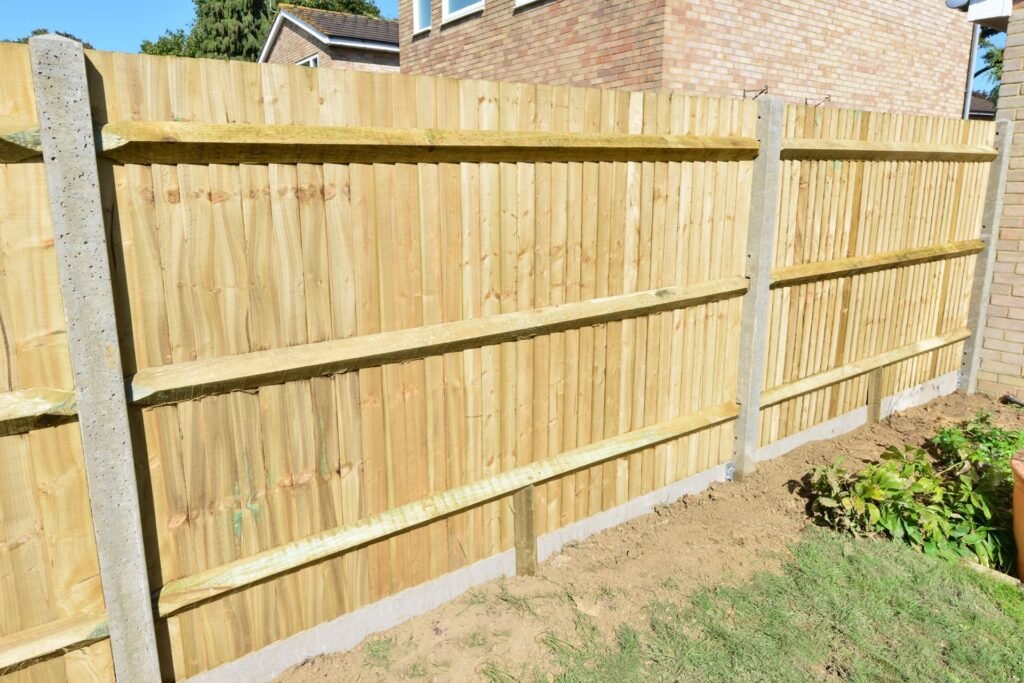
Hidden Costs To Watch Out For
When planning a fence installation, it’s important to budget beyond just the basic materials and labor. There are several hidden costs that homeowners may not anticipate, which can significantly add to the overall expense. Here’s a breakdown of these potential additional charges:
Permit Fees
Depending on where you live, local regulations may require you to obtain a permit before installing a fence. These permit fees vary based on location and the type of fence being installed. In some areas, failure to secure the necessary permits can lead to fines or forced removal of the fence, so it’s crucial to check with your city or municipality beforehand. This fee can often be an unexpected addition to the project’s cost, potentially adding hundreds of dollars.
Property Line Survey
Before installing a fence, you may need a professional surveyor to confirm the boundaries of your property. This is especially important if the fence will be installed near the edge of your property to avoid disputes with neighbors. Hiring a surveyor involves labor costs, which can range from a few hundred to over a thousand dollars depending on the size of your lot and location. Skipping this step can lead to potential legal issues or the need to move the fence later on, which will add more costs down the line.
Old Fence Removal
If you have an existing fence that needs to be replaced, don’t forget to account for the cost of removing it. Dismantling and disposing of old fencing materials is an additional labor-intensive task that can increase the total price. The fees for this service vary based on the size of the fence and the complexity of removal, and they can add up quickly, especially if the materials require special disposal methods.
Underground Utilities
One hidden cost that homeowners often overlook is dealing with underground utilities. Before digging post holes for a new fence, it’s essential to identify and mark any underground utility lines to prevent damage or accidents. This process may involve both labor and fees for professional utility marking services. If any utility lines need to be relocated, the costs can escalate even further. Protecting these utilities is not only required by law but also critical for avoiding dangerous situations and hefty repair bills.
Customization and Add-ons
While basic fence installations cover standard materials and labor, customization can quickly drive up costs. If you’re opting for features like gates, privacy panels, or intricate design elements, expect to pay extra. These add-ons typically require additional materials and labor, which increase the overall project cost. Additionally, high-end finishes or specialized materials will likely come at a premium, so it’s essential to factor these customizations into your budget.
In summary, when planning your fence installation, it’s crucial to be aware of these potential hidden costs. Taking the time to understand these factors upfront can help you avoid unexpected expenses and ensure that your project stays within budget. Always consult with a professional to get an accurate estimate of all the associated costs, from permits to customization.
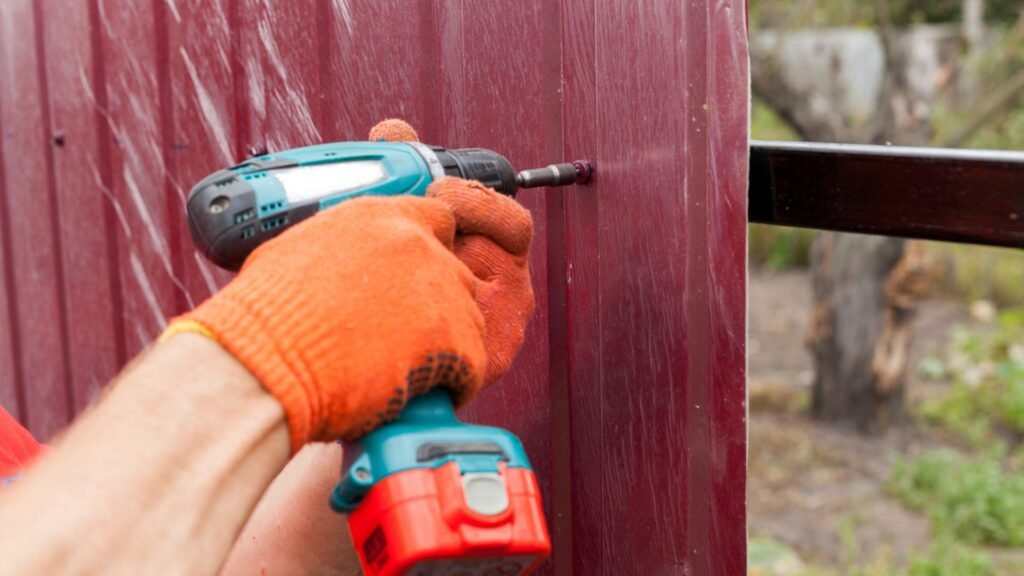
How To Save On Fence Installation Labor Costs
Fence installation can be an investment, and labor costs often make up a significant portion of the total expenses. However, with some strategic planning and a few proactive steps, you can lower those costs significantly. Below are five proven ways to save on fence installation labor costs, each offering actionable advice to help you get the best value for your money.
1. Get Multiple Quotes
One of the most effective ways to reduce labor costs is to compare prices from multiple contractors. It’s essential to gather quotes from at least three contractors to ensure you’re getting a fair price. By doing so, you can evaluate the range of costs and select the most competitive bid without sacrificing quality. Different companies may offer varying rates for similar services, and some might provide better packages, so shopping around can help you avoid overspending. Additionally, don’t just focus on the lowest bid—consider the contractor’s reputation, experience, and previous customer reviews. The goal is to find a balance between affordability and quality.
2. Choose the Right Time of Year
Did you know that the time of year you install your fence can directly impact labor costs? Scheduling your fence installation during the off-season, typically in fall or winter, can lead to significant savings. Many contractors experience a slowdown during these months and are often more willing to offer discounts or negotiate lower rates to secure work. Not only can you benefit from lower prices, but you may also find that contractors are more flexible with their scheduling, allowing you to get the project completed faster. So, if your timeline is flexible, plan to install your fence when demand for labor is lower.
3. Prep the Site Yourself
Another way to cut down on labor expenses is to do some of the preparatory work yourself. This can include tasks like clearing the land, removing debris, and marking the boundaries where the fence will be installed. By handling these pre-installation chores, you can significantly reduce the amount of time the contractor needs to spend on-site, which in turn lowers your labor costs. Contractors typically charge for every hour they work, so the less time they spend preparing the area, the less you’ll pay. Just make sure you consult with your contractor beforehand to ensure that you’re doing the prep work to their specifications.
4. Bundle Services
If you have other landscaping or construction projects in mind, consider bundling these services together with your fence installation. Many contractors offer discounts when multiple services are booked simultaneously. For example, if you’re also thinking about installing a patio, driveway, or even doing some major landscaping work, ask if the contractor can bundle these services into one package. This approach can lead to lower labor rates because the contractor is already on-site, and it’s more cost-effective for them to handle several jobs at once. Plus, bundling often makes project coordination smoother and faster, saving both time and money.
5. Negotiate
Lastly, don’t be afraid to negotiate. While many people assume that contractor quotes are set in stone, there’s usually room for flexibility, especially if you’re a good communicator and approach the conversation respectfully. Ask the contractor if there’s any room for discounts or package deals. Some might be willing to offer a price cut if you agree to schedule the work during a slower period or pay a portion of the total cost upfront. It can also help to mention that you’re getting multiple quotes, as this might encourage them to be more competitive with their pricing. Negotiation is a skill, and even a small reduction in labor costs can make a big difference in your overall budget.
By being strategic about how you approach your fence installation project, you can save a substantial amount on labor costs without compromising on quality. Get multiple quotes, plan your installation for the off-season, do some of the prep work yourself, consider bundling services, and don’t hesitate to negotiate with your contractor. With these tips, you’ll be well on your way to a successful fence installation that fits your budget.
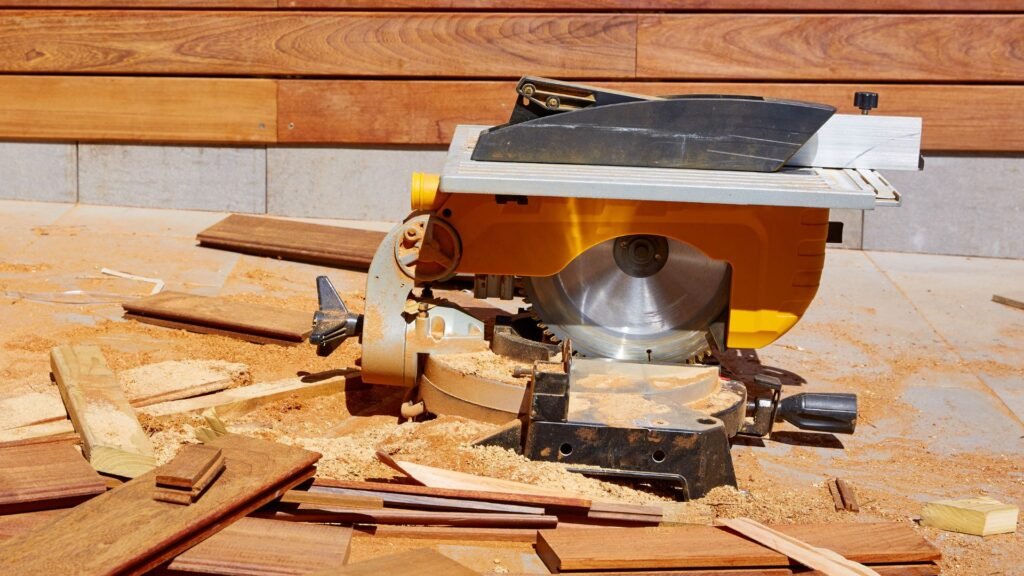
What To Look For In A Fence Installation Contractor
When choosing a fence installation contractor, there are several key factors to consider to ensure you hire the right professional for the job. Below is a detailed breakdown of what to look for in a contractor, making the process easier and helping you avoid common pitfalls.
1. Experience and Expertise
Experience matters when it comes to fence installation. Contractors with years of experience are more likely to provide high-quality results because they have encountered a variety of project types and challenges. Look for companies or individuals who have a proven track record of successful installations. Reviews and recommendations can offer valuable insights into the contractor’s skills and reliability. An experienced contractor will also be knowledgeable about different fencing materials and installation techniques, which means they can guide you to the best options for your specific needs.
2. Licensed and Insured
Hiring a licensed and insured contractor is essential for protecting yourself from potential legal or financial risks. A licensed contractor has met certain standards set by the industry, ensuring they have the necessary qualifications to perform the job. Insurance, on the other hand, provides a safety net in case of accidents or damages that may occur during the installation process. Without these credentials, you could be held liable for injuries or damages that happen on your property. Always ask for proof of licensing and insurance before committing to a contractor to avoid unnecessary headaches.
3. Warranty or Guarantee
A reputable contractor often provides a warranty or guarantee on their work. This demonstrates their confidence in the quality of their labor and gives you peace of mind. A warranty can cover things like materials, workmanship, and repairs if issues arise after the installation. While not all contractors offer the same terms, choosing one who does can save you from unexpected costs down the line. Be sure to read the fine print on any guarantees to understand what is covered and for how long.
4. Transparency in Pricing
Clear communication about costs is critical when hiring a fence installation contractor. Make sure you get a detailed estimate that breaks down all expenses, including materials, labor, and any additional fees. Avoid contractors who give vague or incomplete quotes, as this can lead to hidden fees later on. By ensuring transparency upfront, you’ll have a better understanding of the project’s overall cost and can plan your budget accordingly.
5. References and Reviews
Finally, take the time to research references and reviews before selecting a contractor. Reading customer testimonials can give you a good sense of the contractor’s professionalism, work ethic, and overall satisfaction rate. Additionally, ask the contractor for a list of references you can contact directly. Speaking with previous clients allows you to get firsthand feedback on their experience, which can help you make a more informed decision.
By keeping these factors in mind—experience, licensing, warranties, pricing transparency, and references—you can feel confident that you’re choosing the right fence installation contractor for your project.
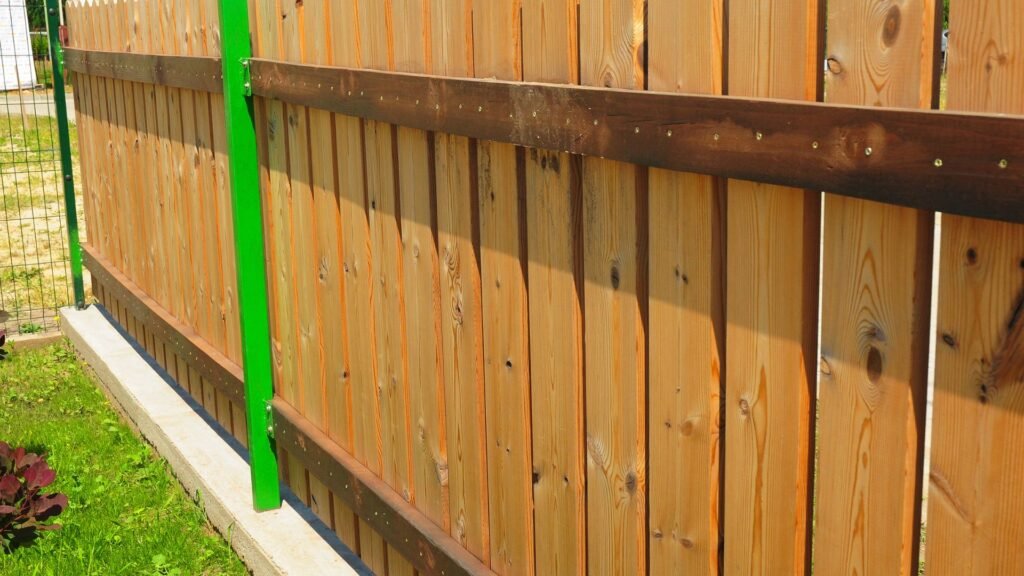
Realistic Price Ranges For Labor
Average Labor Costs Nationwide:
When planning a fence installation, it’s important to understand the average labor costs that you can expect across different regions. On a nationwide level, labor costs for installing a fence typically range from $30 to $75 per linear foot. However, these numbers can vary significantly depending on where you live. For instance, in rural areas, labor may be on the lower end of this range due to reduced demand and lower living costs. In contrast, urban locations or regions with a high cost of living, such as major cities like New York or San Francisco, tend to have labor costs on the higher end due to the increased demand for contractors and higher wages.
Additionally, factors such as the complexity of the installation, accessibility of the site, and specific local conditions (like rocky soil or extreme weather) can also affect labor pricing. For example, an intricate design or a fence that requires deep digging in hard soil will likely increase labor costs. Homeowners should always seek multiple quotes from local contractors to get a better sense of the labor costs specific to their area.
Breakdown of Labor Costs vs. Total Installation Cost:
In most fence installation projects, labor expenses account for a significant portion of the total cost. Typically, labor costs make up about 30-50% of the overall expense. The remaining 50-70% comes from material costs and other factors like permits or site preparation. This means that if a project is quoted at $10,000 for a new fence, you can reasonably expect labor to account for $3,000 to $5,000 of that total.
The percentage of labor costs in relation to total cost will fluctuate based on the type of fence, the complexity of the installation, and the materials used. For simpler installations, like a standard chain-link fence, labor costs may sit closer to the 30% mark, while high-end materials or complex designs, such as custom wood fences or elaborate metalwork, may push labor closer to the 50% mark due to the additional expertise and time required.
Examples of Full Cost Estimates for Different Fence Types:
To help you understand how labor impacts the total cost of your fence installation, let’s look at a few examples based on different materials and fence lengths.
1. Wood Fence (Cedar or Pressure-Treated Pine)
- For a 150-linear-foot wood fence, the total installation cost may range from $3,000 to $6,000.
- Material costs typically make up $1,800 to $3,600, with labor costs coming in at $1,200 to $2,400.
2. Vinyl Fence
- A vinyl fence for the same 150 linear feet could cost anywhere between $4,500 and $8,500.
- Vinyl materials are more expensive, accounting for $3,000 to $5,600 of the total cost. Labor would generally be around $1,500 to $2,900.
3. Chain-Link Fence
- For a 150-foot chain-link fence, expect a total cost in the range of $2,000 to $4,000.
- Materials would typically run $1,200 to $2,200, with labor costs between $800 and $1,800.
These examples provide a rough guide, but it’s important to get personalized estimates from professionals who can take into account factors specific to your project, such as the terrain of your property, local labor rates, and any additional features or modifications you may require for your fence.
Overall, being informed about the realistic price ranges for labor and understanding the breakdown of costs can help you plan a fence installation project that fits your budget without any surprises.
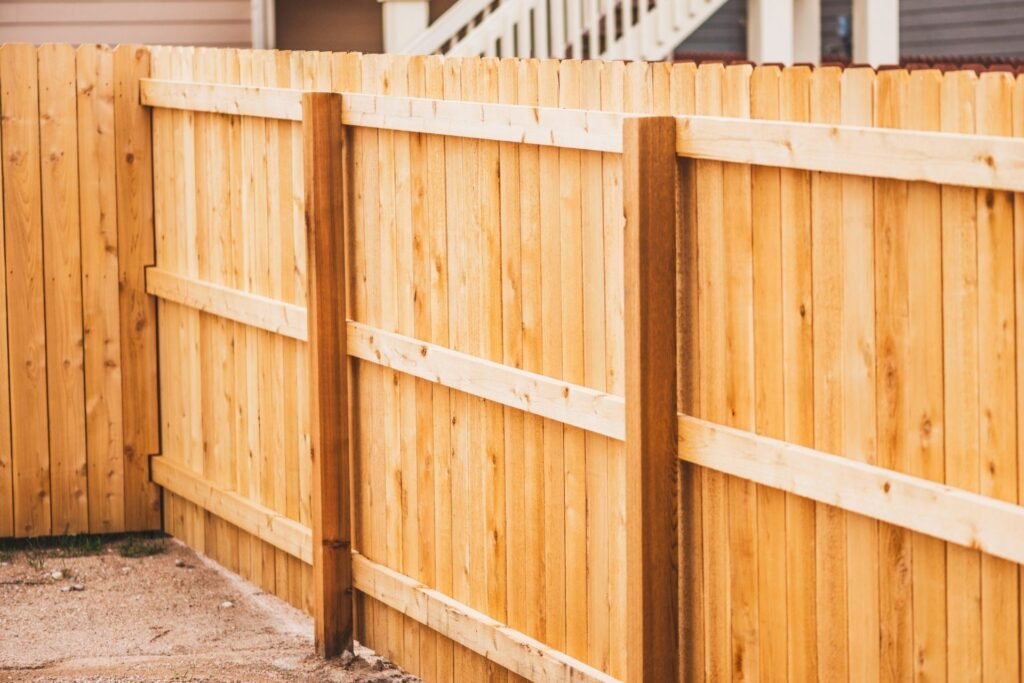
FAQs: About How Much Is Labor For Fence Installation
How much does labor typically cost for fence installation?
Labor costs for fence installation typically range from $30 to $80 per hour or $7 to $12 per linear foot. These prices depend on the type of fence, the complexity of the installation, and the region where the installation takes place.
What factors influence the labor cost of installing a fence?
Several factors impact the labor cost, including the type of fence material, the length and height of the fence, the terrain of the installation site, and regional labor rates. Additional elements like gates or custom designs can also increase labor costs.
Is it cheaper to install a fence myself?
DIY fence installation can save money on labor, but it requires a significant amount of time, effort, and the right tools. Hiring professionals ensures the job is done efficiently and correctly, especially for complex or large projects. Mistakes in DIY projects can lead to costly repairs down the line.
How long does it take to install a fence?
The time it takes to install a fence depends on the type and size of the fence. For a typical residential fence, the installation may take between 2 to 5 days. Larger, more complex projects or difficult terrain may extend the timeline.
Does removing an old fence affect labor costs?
Yes, removing an old fence adds to the labor costs. Most contractors charge an additional fee for demolition and disposal of the old fence, which can range from $3 to $5 per linear foot, depending on the material and condition of the existing fence.
Do I need a permit for fence installation?
In many areas, a permit is required for fence installation, especially if the fence exceeds a certain height or is installed near property lines. Check with your local zoning or building department to determine if a permit is needed and whether the cost of the permit is included in the labor estimate.
What is the most expensive part of fence installation?
The most expensive part of fence installation is usually the material itself. However, labor can become the highest cost factor if the installation is complex or the site conditions are challenging (e.g., rocky or uneven terrain). For custom or intricate designs, labor costs can significantly increase.
Can I save money by preparing the site myself?
Yes, you can reduce labor costs by preparing the site before installation. This may include clearing vegetation, marking the boundary, or leveling the ground. However, it’s important to check with the contractor to ensure your efforts align with their requirements.
What should I look for when hiring a fence installation contractor?
When hiring a contractor, consider their experience, expertise, and reviews. Make sure they are licensed and insured, and ask for detailed quotes that include labor, materials, and any potential additional fees (e.g., for permits or old fence removal). Warranties on labor and materials are also an important factor to consider.
Are labor costs higher for custom fence designs?
Yes, custom fence designs typically require more time, precision, and expertise, leading to higher labor costs. Custom elements such as decorative features, gates, or unique materials (like wrought iron or wood with intricate designs) can increase both the time and effort required for installation.
Conclusion
In conclusion, understanding labor costs is an essential aspect of planning a fence installation, as it can significantly impact your overall budget. Factors such as the complexity of the project, materials used, and local labor rates all play a role in determining the final cost. It’s important to take these variables into account and gather multiple quotes from contractors to ensure you’re getting a fair price. Additionally, consider your property’s unique needs, as well as whether a DIY approach or hiring a professional is the best fit for your project. Taking the time to carefully evaluate these factors will help you make a more informed, cost-effective decision.
About the Author:
Mike Veail is a recognized digital marketing expert with over 6 years of experience in helping tradespeople and small businesses thrive online. A former quantity surveyor, Mike combines deep industry knowledge with hands-on expertise in SEO and Google Ads. His marketing strategies are tailored to the specific needs of the trades sector, helping businesses increase visibility and generate more leads through proven, ethical methods.
Mike has successfully partnered with numerous companies, establishing a track record of delivering measurable results. His work has been featured across various platforms that showcase his expertise in lead generation and online marketing for the trades sector.
Learn more about Mike's experience and services at https://theleadguy.online or follow him on social media:
